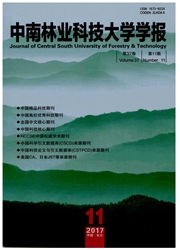

 中文摘要:
中文摘要:
对湘潭锰矿业废弃地土壤重金属含量、自然定居的草本植物对重金属吸收与转移特征进行了研究.结果表明:土壤重金属含景较高,其中Zn、Cd、Pb的含量超过国家土壤环境质量标准(GB15618—1995)的3级标准。是一类被重金属复合污染的土壤;自然定居的草本植物对重金属的吸收表现为富集型植物(如商陆Phytolacca acinosa)、根部囤积型植物(如野茼蒿Crassocephalum crepidioides)、规避型植物(如灯心草Medulla Junci)等3种类型.研究结果为寻找和发现适合当地气候条件与土壤条件的重金属耐性植物提供科学依据。
 英文摘要:
英文摘要:
Heavy-metal contents and absorption characteristics of naturally restored plants were investigated in the wasteland of Xiangtan Manganese Mine, Hunan Province. Results show that the wasteland has a high content of heavy metals, for the contents of Zn, Cd and Pb are all beyond National Standards for Environment Quality of Grade Three Soil, and becomes a type of complex heavy- metal contaminated soil; and that the uptake of heavy metals by naturally restored herbaceous plants can be classified into three types according to the metal contents in plant shoots and roots: they are (1) the accumulator, eg. Phytolacca acinosa, which absorbs a large content by the roots and transports it to the shoots, (2) the root compartment, eg. Crassocephalurn crepidioides, which also absorbs a large content but mainly in the roots, and (3) the excluder, eg. Medulla dunci, which absorbs a smaller content than the accumulator. This provides a scientific basis for searching and finding out tolerant plants which are adaptable to local climates and soil conditions.
 同期刊论文项目
同期刊论文项目
 同项目期刊论文
同项目期刊论文
 期刊信息
期刊信息
